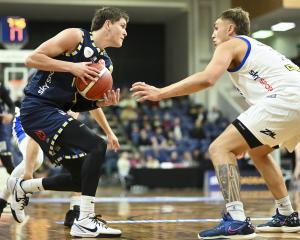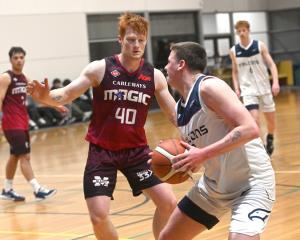
That is the analysis of Tall Ferns head coach Guy Molloy and Basketball New Zealand high performance manager Leonard King.
They held a coaching clinic in Dunedin last night, exposing local coaches and players to offensive concepts in the Tall Ferns style of play.
It was one of 11 sessions around the country.
Both Molloy and King have plenty of experience in the Australian system, which has lead the Opals to becoming the world No 2 ranked women’s team.
Molloy said New Zealand was in a good "launch spot" and sessions such as last night’s were part of helping take the next step.
"I’m seeing [with] the ground swell of juniors playing the game how the numbers are increasing.
"That’s a phase Australia’s been through.
"The next part of that is you’ve got to turn that into a more refined competition with the coach development and the player development.
"It’s a long game."
He said the Tall Ferns had made progress, having risen 10 spots in the rankings to 35 in recent years and beaten teams such as Korea.
However, getting out of the "big middle" and into the world’s elite would take a lot of work.
"To compete at the next level this long game’s got to unfold.
"It can only unfold with a really good pyramid at the bottom of things.
"Everywhere I’ve been my advice has been to invest in coaching, invest in coaching development, invest in skill development."
King loved the trajectory the women’s game was on, but said there was a lot of work to do.
He was a believer in the "if you can see it, you can be it" theory and he felt getting women’s basketball more exposure was important.
That would increase interest in the game, which should boost playing numbers and create a deeper pool of talent.
Moves such as getting the entire women’s NBL on television last year were significant.
But he felt that league needed to be extended.
Many of the country’s top players were heading to Australia to play top-level games and he said the vision was to provide that opportunity at home.
There was a lot of work to get there, though, particularly compared to the top countries in the Asia region.
Providing constant opportunities to compete at a high level was key.
"The way I see that is just by building the infrastructure," King said.
"We want to put something in place that’s sustainable long term.
"Right now you’ve got Australia that’s second in the world, they pump in $4million-$5million into junior development at the Australian Institute of Sport and have been for over 20 years.
"Japan and China have unlimited resources for their junior players.
"Those are three full-time professional basketball countries. We don’t have a full-time professional women’s league.
"We have to build the infrastructure first."












